By Dan Weisz
In my last post, I shared a portrait of a White-tailed Deer in my front yard and another photo of a pair of White-tailed Deer, taken at Fort Huachuca at the end of May. These are the same species of deer we see roaming through the Foothills
This weekend, I traveled back to the Huachucas to assist with a Hummingbird Monitoring project on base banding hummingbirds. The location for this is at the entrance to Huachuca Canyon at the Fort’s old Parade Grounds. Once again, there was a group of deer feeding on the grass on that very quiet location. Below is a photo that appears to be an adult doe and a one-year old youngster showing you the setting.
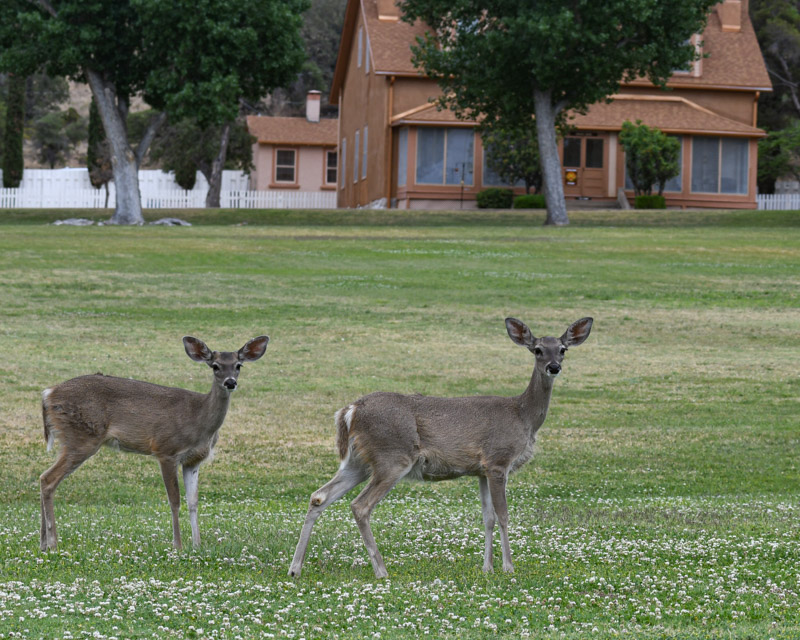
I had earlier driven up Huachuca Canyon and came across deer after deer. Often they were in pairs but there were times I only saw a single deer. The sub-species of the White-tailed Deer in the Southwest is calleld Coues’ White-tail named after famed mammologist and ornithogist Elliot Coues, who lived in the second half of the 1800’s. Coues’ White-tails are the second smallest of the White-tailed Deer subspecis in our country, larger than only the Key Deer of the Florida Keys.
The following series are of this one individual deer. I came across it while it was feeding on leaves next to the forest road. You can see the the white on the underside of its broad tail. When it senses danger or flees, the deer holds its tail up and that white stands out as a bright signal.
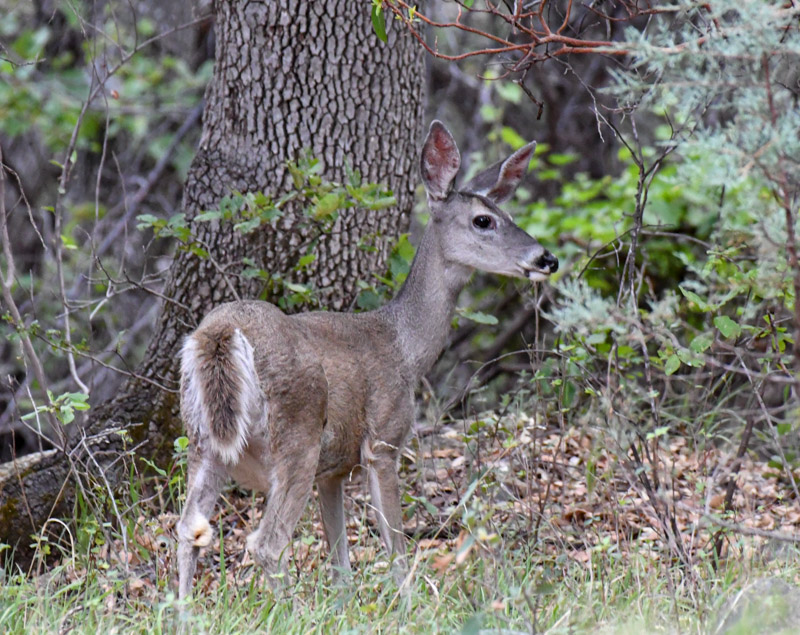
After watching me for a while, the deer turned and began to cross the road. I’m not sure if it was licking its lips after eating leaves or if it was searching for a scent in the air. The scratches on the deer’s face may be from running into sharp branches in the thick forest. Note that White-tailed Deer also have white around their eyes and behind the nose.
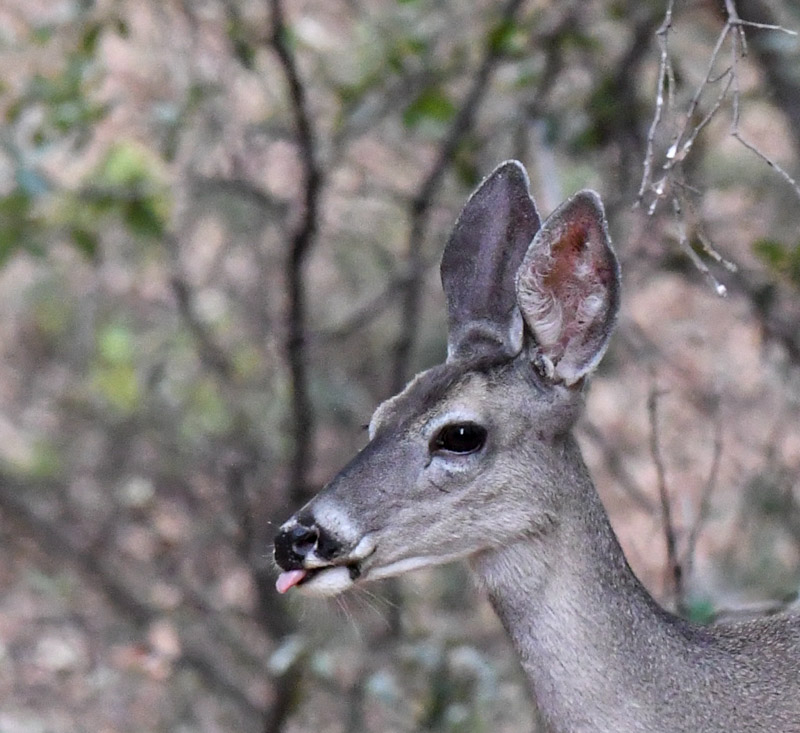
And the deer calmly crossed the road.
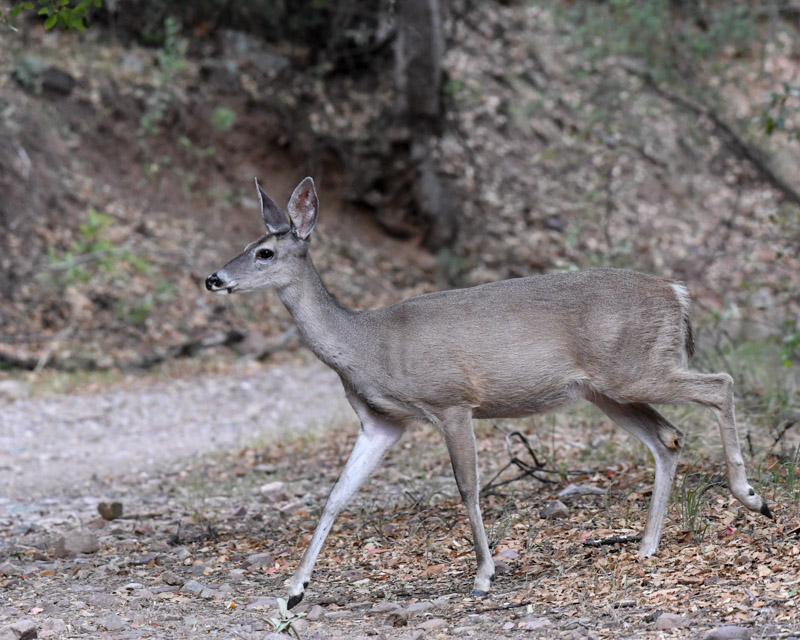
Once it crossed and walked uphill a bit, it stopped and turned towards me. Like many mammals, deer can move their ears independently allowing them to hear in two different directions at the same time. This comes in handy when you need to be alert to predators and other danger. The red spots in her ear may either be from running into branches or might be from some kind of parasites. The ears are sparsely furred relative to most parts of the deer’s body and thus offers easy access to a meal for mites, fleas, flies, etc.
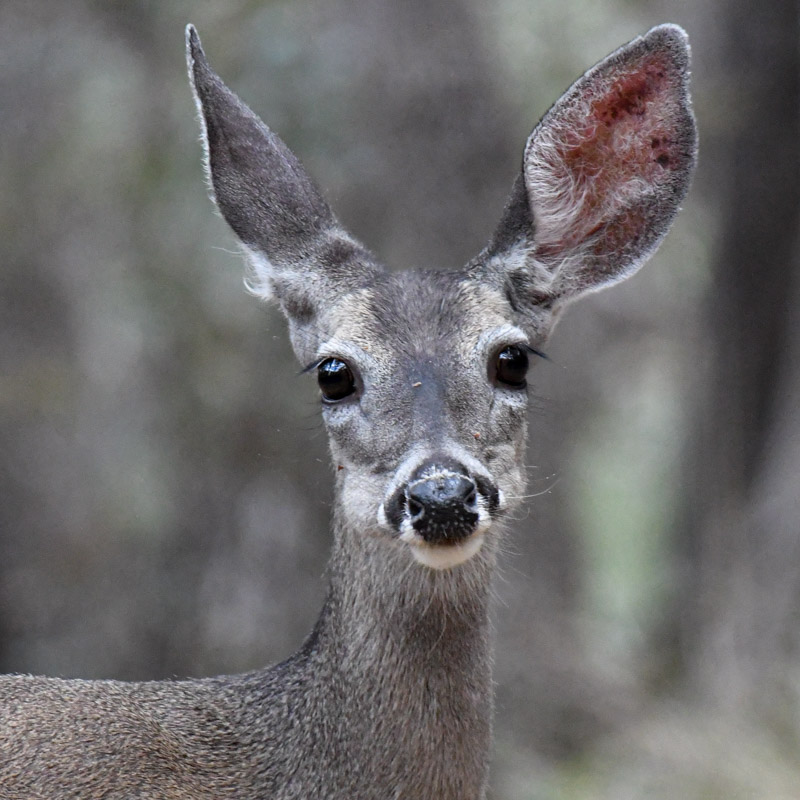
Back near the Parade Grounds, a young buck appeared and remained relatively close for a while. We humans are quick to anthropomorphize, yet I really do not believe this deer was happy to see me. I’m pretty sure of that.
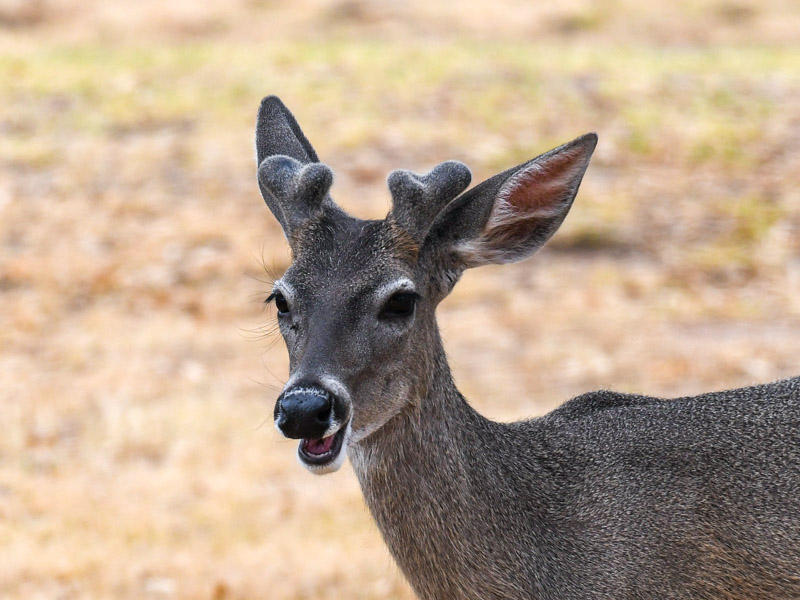
The male deer’s antlers begin to grow each spring and take months to grow to full size. it is impossible to know (in June) how big the antlers will eventually become. At this stage, the antlers are covered in “velvet”, i.e., skin and light fur. The growing core underneigh is a cartilage nourished by blood vessels. Once the growth is compete, the velvet comes off leaving behind the bone core. This deer will use his antlers in combat with other males for access to females during the breeding season, called the rut. Once the breeding season is over, the antlers will fall off and the process will repeat itself the following summer. And, no, the deer is not smiling.
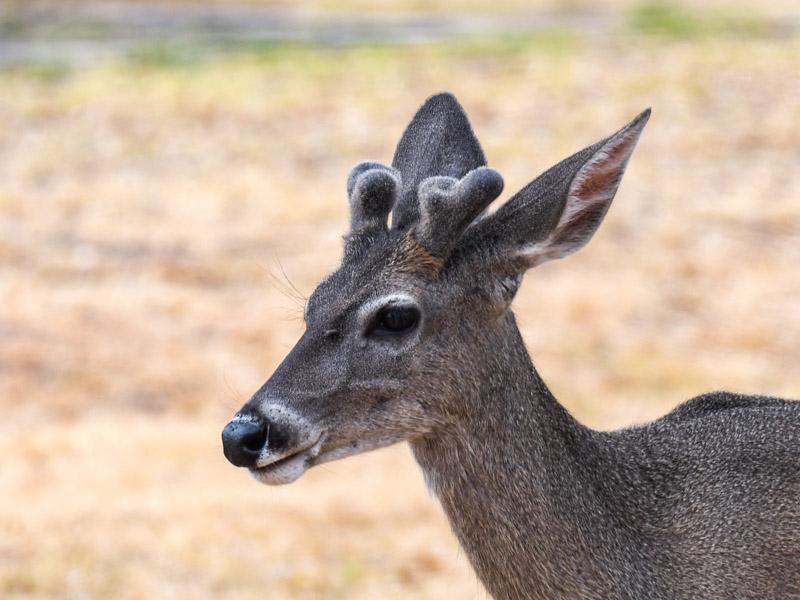
No, it is really not happy to see me!!
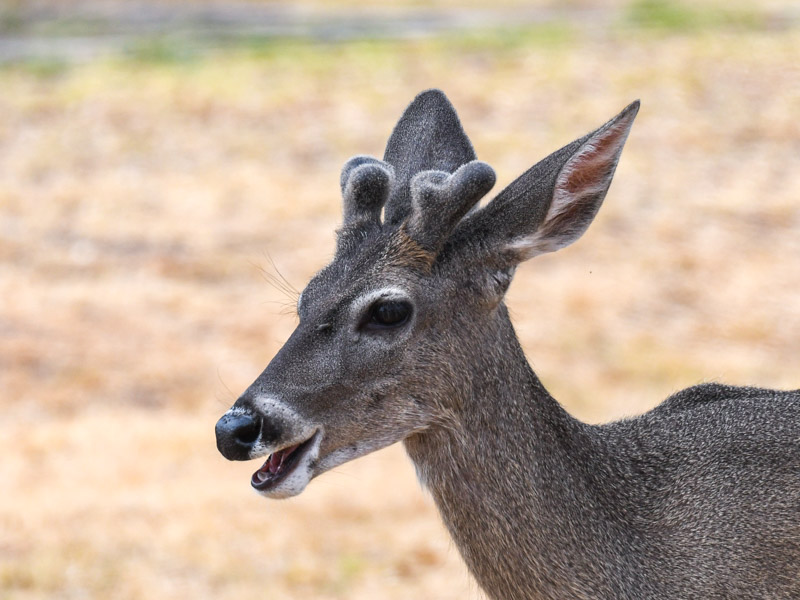
And again, deer can move their ears independently. Look at the long eyelashes of this good looking young buck! I wonder how big his antlers will grow by October? I plan to return to the Huachuca Mountains monthly this summer so perhaps I will see this fellow again.
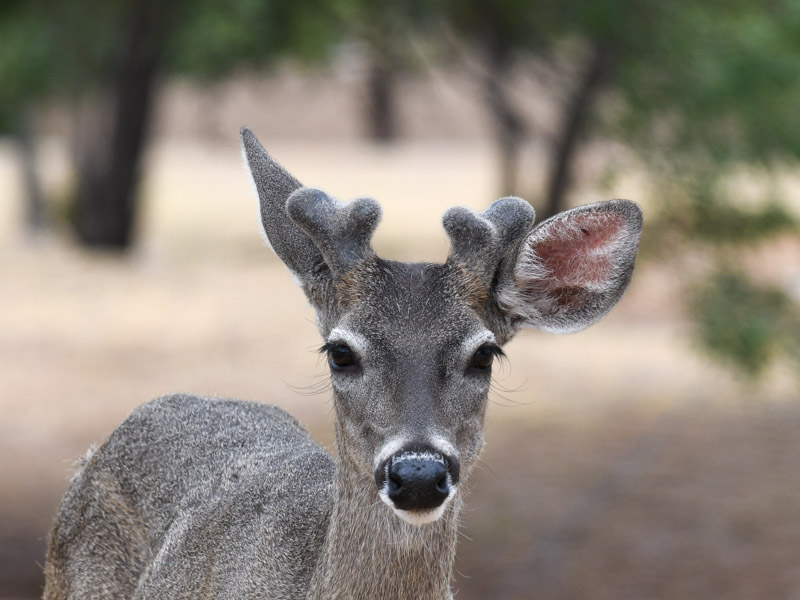
Special thanks go to Jeff Babson, the Wildlife Viewing Program Specialist with the Pima County Department of Natural Resources, Parks and Rec. Jeff provided me with much of the background information for this email. He is one of my “go-to” sources for wildlife questions and he is always available to share. Jeff also owns and runs his own nature company called Sky Island Tours.
